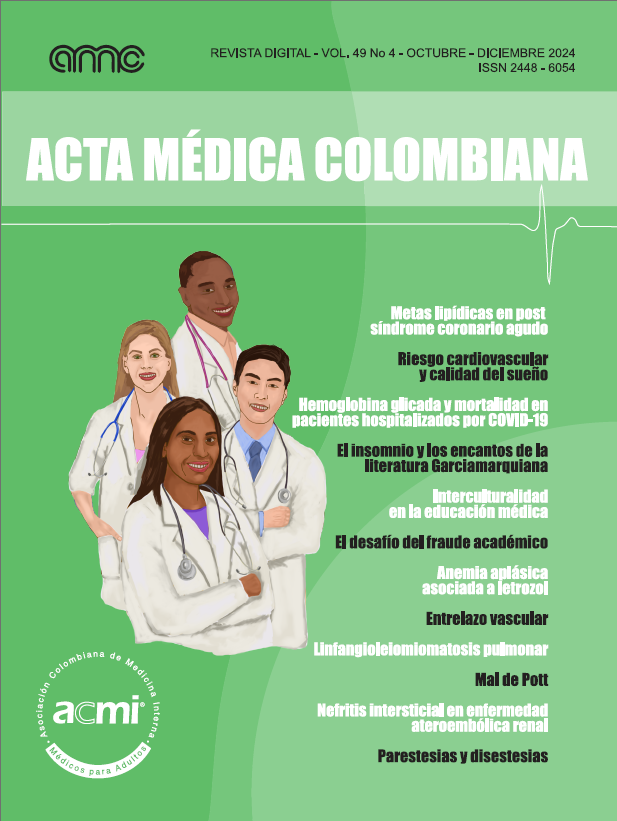Factors related to achieving lipid targets in post-acute coronary syndrome patients at two cardiovascular referral centers
Abstract
Background and objectives: patients with coronary disease have a very high cardiovascular risk, with dyslipidemia being the most prevalent risk factor and the one most responsible for recurrence. In previous studies, we have found a low percentage of achievement of low-density lipoprotein cholesterol (LDL-C) targets, requiring additional treatments besides statins. Therefore, we decided to describe the proportion of patients who reach LDL-C cholesterol targets at our institution, and identify the factors associated with achieving these targets.
Patients and methods: this was an observational, retrospective cohort study carried out from January to March 2019. Patients with acute coronary syndrome and evidence of significant coronary atherosclerosis were enrolled. Using the SPSS v26 statistical program, independent variables like sociodemographic, cardiovascular risk, treatment and laboratory factors were described. The frequency with which LDL-C targets were reached was determined, and a bivariate analysis was done of the factors associated with reaching lipid targets, calculating the RR with its respective 95% CI.
Results: a total of 146 patients were identified, with an average age of 62.8 ± 9.3 years, and male predominance (63.7%). Altogether, 71.9% received high-intensity statins, but this percentage decreased to 60.3% after three months. A total of 53.4% of the population achieved the LDL-C targets. None of the factors associated with achieving the targets showed statistical significance. As a relevant finding, of the patients who were enrolled in the study with out-of-target LDL-C values (n=97), 43% were able to control their LDL-C levels during follow-up: these changes were statistically significant (p<0.0001).
Conclusions: high-intensity statin treatment is essential in atherosclerotic cardiovascular disease prevention, with a high percentage of lipid target achievement, along with a well-structured institutional cardiovascular prevention and risk factor control program, leaving a select group of patients for new lipid lowering drugs.
Metrics
Copyright (c) 2024 Jhon Sebastian Correa zapata, Hugo Rafael Granados Charris, Erika Juliana Martinez Gallego, Nelly Velasquez Lopez

This work is licensed under a Creative Commons Attribution 4.0 International License.
Acta Medica Colombiana uses the CC-BY 4.0 license. Authors retain all rights over their work.


